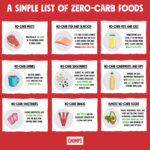The human body is remarkably resilient, but food is essential for survival. But how long exactly can a person survive without food? This is a complex question with no single answer, as survival time depends on various factors.
Estimates from cases of people trapped or lost suggest that survival without food ranges from 8 to 21 days. Some extreme cases, like the hunger strikes in the Maze Prison, show that individuals can survive even longer, up to 45-61 days, albeit under dire circumstances.
During the initial days without food, the body undergoes significant changes. In the first 5 days, a person might lose a substantial amount of weight, around 2.2 to 4.4 pounds per day, largely due to water loss and glycogen depletion. By day 4, feelings of faintness and dizziness are common as the body starts to conserve energy and blood sugar levels fluctuate.
If food deprivation continues and a person loses 10% of their body weight or reaches a BMI of 16.5 or less, the risk of severe starvation complications dramatically increases. Experts monitoring hunger strikes recommend close medical observation after 10 days of fasting, especially if the individual’s starting weight is unknown, to manage potential health crises.
While surviving 30 days without food is theoretically possible, it’s highly improbable and dangerous. Historical records mention cases of survival up to 61 days, but the typical survival window remains within 8 to 21 days. These longer survival periods are exceptional and often associated with severe health consequences.
In end-of-life care, such as hospice, the decreased desire for food and water is a natural part of the dying process. Hospice care prioritizes patient comfort and does not typically withhold food or water if requested. However, forcing food or fluids when the body is shutting down can be uncomfortable and even counterproductive, potentially prolonging suffering.
It is crucial to remember that these are general guidelines. Individual survival times can vary greatly depending on factors like body fat percentage, hydration levels, environmental temperature, and overall health. This information is for general knowledge and not a guide for attempting prolonged fasting, which can be extremely dangerous. If considering fasting for health or religious reasons, consult with healthcare professionals for safe and supervised guidance.




